
Ciaran Davis
Chief Executive Officer, ARN Media
Ciaran Davis is leaving ARN Media in late 2025 after a decade marked by growth and structural innovation.
Despite some strategic setbacks his legacy is deep. He leaves a business during a transformation program designed to cut costs, boost digital capacity and strengthen its position in audio and streaming.
Davis’s influence will endure across Australia’s audio landscape, proving that traditional radio networks can evolve, compete and lead in a streaming era and setting a benchmark for what successful media re-invention looks like in 2025.

Scott Purcell & Frank Arthur
Co-Founders & Directors, Man of Many
Scott Purcell and Frank Arthur have shaped Man of Many into far more than a men’s lifestyle platform. It’s now a significant cultural voice, and test-bed for independent media innovation in Australia.
Over the past year the duo has expanded the brand’s reach to more than six million monthly viewers globally, deepened their multi-platform presence and secured large-scale partnerships with major consumer brands.
They have also broadened editorial focus to include men’s mental-health content, sustainability-led campaigns and diversity in storytelling, all areas that have helped the publication earn recognition for both commercial performance and cultural relevance.
Purcell and Arthur’s leadership is defined by their ability to combine digital agility with editorial authenticity.
That insight underpins the brand’s strategy as it connects audience trust with branded content and measurable results proving that editorial credibility and commercial growth can coexist.
In 2025, their influence is palpable across advertising, publishing and culture shaping how a generation of Australian men engage with content, brands and each other.

Nick Shelton
Founder & Publisher, Broadsheet Media
Nick Shelton has built one of Australia’s most distinctive modern media brands turning Broadsheet from a local city guide into the country’s most trusted voice on food, fashion, travel and design.
As Founder and Publisher, Shelton oversees the company’s editorial and commercial direction across digital, social, print and experiential channels.
In 2025, Broadsheet has continued its national expansion, strengthening its reputation as a curator of culture through the Broadsheet Store, new travel verticals and integrated brand partnerships that bring its influence from screen to street.
Shelton’s success lies in his ability to merge journalism with community. Broadsheet’s recommendations carry both authority and intimacy, empowering small businesses while shaping consumer trends across Australia’s creative industries.

Brent Williams
Director of Sport, Nine Entertainment Co.
Brent Williams is driving sport to the centre of Nine’s streaming and broadcast future, knitting together free-to-air and digital rights to maximise value, reach and revenue.
In the past year, he has overseen the consolidation of sport production under his leadership as Wide World of Sports and Stan Sport are now formally unified in production, streamlining workflows and enabling more efficient broadcasting.
He has pushed forward with data-led advertising models and premium brand partnerships, especially across Stan Sport, where lower ad loads and more precise audience segmentation are becoming part of the offering.
As he leads the country’s most valuable portfolio of sport, that includes the Australian Open, Williams’s leadership is helping redefine how sporting content is delivered, monetised and experienced in Australia.
He is transforming the role of live sport into a growth engine, not just for ratings, but for subscription, ad revenue and cross-platform engagement, making Nine a benchmark for modern, audience-driven sport media.

Adam Ferrier
Founder, Thinkerbell
Adam Ferrier is a pioneering force in Australian marketing and media, melding behavioural science with creative leadership to reshape how brands, agencies and audiences think about change.
Across 2025, Ferrier’s influence has been evident through his regular commentary on national platforms and in industry forums, where he bridges academic insight and mainstream conversation.
As the founder of Thinkerbell, an agency known for its “measured magic” fusing marketing science and brand creativity, he continues to lead work that challenges conventional thinking in media, advertising and behavioural change.
Ferrier’s signature approach is spotlighting how psychology underpins choice, attention and engagement and it’s resonated widely this year in boardrooms, creative workshops and keynote stages.
In 2025, Ferrier’s ability to translate psychology into practical storytelling has made him a rare voice who crosses industry, culture and strategy with clarity and effect.

James Chessell
Editor-in-Chief, The Australian Financial Review
James Chessell is steering the nation’s premier business masthead into a new era, guiding corporate and policy discourse with a precision few can match.
Appointed Editor-in-Chief of The Australian Financial Review in August 2024, he brought editorial leadership and a sharp sense of strategic purpose to the role.
Under his leadership in 2025, the Australian Financial Review (AFR) has reinforced its position as the country’s most-read premium business publication, reaching a cross-platform audience of 3.2 million, around 93% of whom accessed it online.
The masthead has broadened its investigative remit into corporate conduct and competition policy, while bolstering its digital-subscription model. These moves are helping reinforce the publication’s standing as a trusted voice in business, politics and economics.
Chessell’s influence extends beyond the newsroom. He is increasingly the go-to editorial authority for business leaders and his name appears frequently in national media and industry forums, underscoring the weight of his input.
In a year when Australian media is adapting to digital disruption and evolving audience behaviours, Chessell has demonstrated how a legacy journalistic brand can sustain impact, drive subscription growth and maintain editorial leadership simultaneously.

Luke McIlveen
Executive Editor, The Sydney Morning Herald / The Age / Brisbane Times / WA Today
Luke McIlveen is shaping the story of Australia’s most-read metropolitan newsrooms, and in 2025 he continues to steer their editorial direction with strategic clarity and audience impact.
As Executive Editor of four major mastheads within the Nine Publishing portfolio, he oversees titles that reach millions each day and help define public discourse from boardrooms to parliaments.
Under McIlveen’s leadership, the digital footprint of these mastheads has grown amid a media landscape under enormous pressure.
He has placed emphasis on investigative journalism, seamless platform transition and audience-first publishing. His editorial teams are increasingly focused not only on breaking news, but on shaping the deeper narrative – politics, policy and social issues that influence the national conversation.
McIlveen is also visible beyond newsroom walls. Frequently cited in media commentary and industry events, he has become a public voice for newsroom transformation, digital archive strategy and the evolving value of journalism in Australia.
By combining commercial acumen with editorial rigour, he ensures that the mastheads he leads continue to invest in depth, independence and impact.
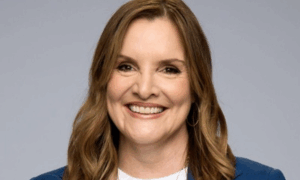
Kirsty Thomson
Executive Producer 60 Minutes & Head of Long-Form Current Affairs, Nine Entertainment Co.
Kirsty Thomson is redefining investigative journalism in Australia, using the reach of 60 Minutes and the launch of a dedicated long-form investigations unit to shape national conversations and elevate storytelling.
In 2025, Thomson was appointed to lead Nine’s newly created Long-Form Current Affairs & Investigations Unit, in addition to her role on 60 Minutes.
The unit formalises what began as a trial phase with digital projects such as The Brief.
Under her leadership the team has delivered ten full-length documentaries and forged partnerships with platforms including Stan, The Sydney Morning Herald and The Age.
As Executive Producer of 60 Minutes, Thomson continues to steer Australia’s flagship investigative brand, reinforcing its reputation for in-depth coverage of political accountability, human rights, and high-stakes global stories.
Her editorial vision is stacking platforms including television, streaming and digital to reach broader and more engaged audiences.
Thomson’s influence is visible in how journalism is now packaged, distributed and consumed. Long-form narratives that were once broadcast-only are now accessible on demand, on multiple screens, and designed to land cultural impact.
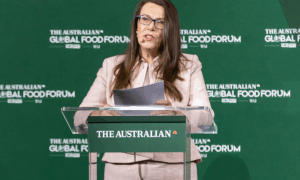
Michelle Gunn
Editor-in-Chief, The Australian
Michelle Gunn is steering one of Australia’s most influential news organisations with a sharp eye for impact, innovation and purpose.
At the helm of The Australian, she has strengthened its role as the national masthead not just of record, but of conversation and consequence.
Over the past year, Gunn has deepened the paper’s investigative journalism output and sharpened its digital-subscription strategy.
Under her leadership the masthead has reinforced its coverage of politics, economics and national security ensuring that boardrooms, parliaments and everyday Australians turn to it for rigorous reporting and commentary.
Gunn has positioned The Australian firmly within the 2025 media landscape. For the publication’s 60th anniversary, she orchestrated a multi-platform celebration that blended print, digital, data and commercial activation.
Beyond metrics, Gunn’s influence is visible in her commitment to inclusion and editorial leadership. As the first female Editor-in-Chief of the paper, she has become a visible advocate for women in journalism and for editorial independence in an age of flux.

Justin Stevens
Director of News, Australian Broadcasting Corporation (ABC)
Justin Stevens has emerged as a defining figure in Australian journalism, leading the ABC’s vast news operation during one of the most challenging periods for public-interest media.
Across 2025, Stevens has accelerated the broadcaster’s shift into digital-first journalism, bolstering regional and multicultural coverage while reinforcing editorial independence and trust.
He oversaw the relaunch of the ABC News website and app, enabling more access across platforms and expanding the organisation’s capacity to serve audiences beyond traditional broadcast.
He has also publicly addressed the broader industry’s “crisis of trust”, warning that media organisations must maintain rigorous standards or risk losing credibility.
Under Stevens’s stewardship, the ABC has deepened its investigative work and launched specialised reporting teams such as dedicated units for Indigenous affairs and climate.
In a media environment defined by change and challenge, Justin Stevens stands out for his leadership in ensuring trusted journalism remains accessible, relevant and responsive.
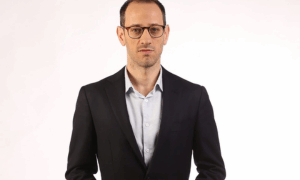
Ray Kuka
Director, News & Current Affairs, Seven West Media
Ray Kuka stepped into one of Australian television’s most influential roles in May 2025, taking charge of the country’s most-watched news service.
With a broadcasting career spanning two decades across Sydney, Melbourne, Brisbane, Perth and international desks, Kuka assumed leadership of Seven’s entire news and current-affairs division, including bulletins, investigative programming and digital news platforms.
In his new role he is tasked with integrating live streaming, FAST-channel news updates and social-first video strategies into Seven’s national news offering.
During 2025, Kuka has guided the network’s transition toward a truly cross-platform news model where linear broadcast, streaming distribution and social content are delivered through a unified editorial ecosystem.
This expansion has strengthened Seven’s presence beyond free-to-air, making major news events accessible and interactive across devices and platforms.
His focus on speed, credibility and storytelling has helped reinforce Seven’s position in a competitive landscape.
Kuka’s background as a working journalist brings editorial discipline and product vision together.
He is leading newsroom transformation while ensuring the connection with audiences remains direct, trusted and relevant.

Steve Crawley
Managing Director, Fox Sports, Foxtel Group
Steve Crawley remains one of the most influential figures in Australian sports broadcasting, guiding Fox Sports through a year that redefined how live sport connects with audiences across platforms.
As Managing Director, he oversees the creative, technical and production direction of Australia’s biggest sporting moments from the NRL’s historic Las Vegas opener to a record-breaking summer of cricket and the success of BBL 14.
In 2025, Crawley led the continued integration of Fox Sports coverage with Kayo and Foxtel’s streaming platforms, ensuring fans can access world-class broadcasts anywhere, anytime.
Under his leadership, the network has expanded its use of 4K production, advanced data visualisation and dynamic storytelling formats, setting new standards for broadcast quality and viewer experience.
A respected voice in both trade and mainstream media, Crawley’s influence extends beyond the control room.
He continues to shape how audiences, advertisers and rival networks perceive the value of live sport in a convergent media landscape where authenticity, technology and passion for the game drive both audience loyalty and commercial success.
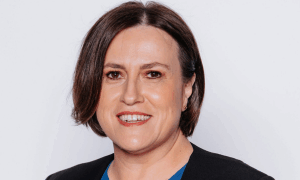
Fiona Dear
Director, News & Current Affairs, Nine Entertainment Co.
As Director of News & Current Affairs at Nine, Fiona Dear oversees one of the country’s largest editorial networks, guiding the evolution of flagship programs and newsrooms across television, digital and streaming.
In 2025, Dear has led a comprehensive cultural and operational transformation that has reconnected Nine’s journalists with their mission to inform and serve audiences with integrity.
She has restructured leadership teams, strengthened editorial standards, and invested in training that equips reporters and producers to navigate the fast-changing demands of real-time, cross-platform news.
Dear has also championed greater diversity and inclusion in newsroom decision-making, ensuring coverage better reflects the communities Nine serves.

Paul Whittaker
Chief Executive Officer, Sky News Australia
Paul Whittaker is steering Sky News Australia through an era where media influence and political discourse are increasingly intertwined.
Whittaker has continued to expand Sky News’ reach through strategic distribution partnerships and the growth of its FAST-channel network, ensuring the brand’s content is accessible to audiences wherever they consume news.
He has strengthened the network’s presence on streaming and social platforms, while maintaining its dominance across Foxtel and regional affiliates.
Whittaker’s editorial vision has positioned Sky News as a platform where strong opinions and live political coverage converge, influencing daily news cycles and public discourse.
His leadership has also seen investment in original programming and digital innovation, modernising the broadcaster’s operations while preserving its unapologetically combative tone.
A former newspaper editor, Whittaker combines journalistic instinct with strategic acumen, making him one of the few media executives whose decisions directly shape political narratives in real time.

Tory Maguire
Managing Director, Publishing, Nine Entertainment Co.
Tory Maguire has emerged as one of the most influential figures in Australian publishing, driving both commercial growth and editorial renewal across Nine’s mastheads.
Promoted in early 2024 to Managing Director of Publishing, she now oversees strategy and operations for The Sydney Morning Herald, The Age, Brisbane Times and The Australian Financial Review and nine.com.au.
Over the past year, Maguire has steered the division through a challenging advertising market while maintaining subscription growth, ensuring Nine’s publishing assets continue to deliver both financial stability and journalistic impact.
As chair of the industry body ThinkNewsBrands until July 2025, Maguire championed a simplified, consistent digital measurement framework, strengthening publishers’ value propositions to advertisers and pushing for clearer recognition of the reach and effectiveness of premium news environments.
Maguire remains clear about the purpose of editorial quality in her brands.
“Trust is the key word in publishing,” she said at the recent Nine Upfronts. “In a world overflowing with misinformation, the credibility of our journalism is not just valuable, it’s vital.”

Angus Ross
Group Managing Director, Seven Television, Seven Group
Angus Ross is helping to guide Seven Television into a digital first era with a 7plus first strategy, positioning the broadcaster to win in both free-to-air and streaming by putting audience needs, local content and cross-platform reach at the centre of its programming and commercial operations.
Since his appointment in mid-2024, Ross has overseen a content slate reinforcing Seven’s mass reach. While these include new tent-pole shows, legacy shows like Home & Away and Sunrise still dominate.
To support this, Seven is investing over $700 million in news, sport and entertainment in 2025.
Ross’s work is reshaping what modern television looks like in Australia, and his influence can be felt across the network and beyond.
It’s not a tug-of-war between broadcast and streaming, but a unified ecosystem where local content, reliable formats and audience experience drive value.
He is helping define the next era of commercial television, proving that free-to-air networks can still lead the market by innovating around platform, content and technology.
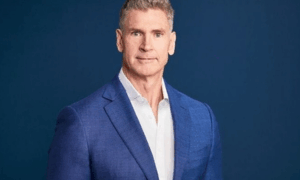
Michael Healy
Executive Director – Entertainment, Nine Entertainment Co.
Michael Healy remains one of the most influential creative figures in Australian TV, shaping what the nation watches and talks about.
As Executive Director of Entertainment at Nine, he oversees the network’s entire entertainment slate from flagship reality franchises to scripted drama, comedy and live event television.
In 2025, Healy has strengthened Nine’s position as the home of locally made, audience-first entertainment.
He has expanded investment in premium Australian formats and storytelling, championing productions that balance commercial success with cultural depth.
Healy is also one of the industry’s most visible and respected creative leaders. His public advocacy for Australian production, fair funding frameworks and the importance of free-to-air television as a cultural touchstone has helped shape broader debate about the future of the screen sector.
Through his leadership, Nine’s entertainment output continues to reflect the stories, humour and spirit that define Australian life.
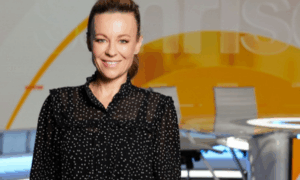
Sarah Stinson
Director, Morning Television, Seven West Media
Sarah Stinson continues to define the tone of Australian morning television, after 20 years at Seven.
As Director of Morning Television at Seven West Media, she oversees Sunrise, Weekend Sunrise and The Morning Show a slate that not only dominates its time slot but also drives the national conversation across broadcast, social media and digital platforms.
Through 2024 and 2025, Stinson has led a comprehensive creative refresh of Sunrise, evolving the program’s storytelling, pace and visual style while strengthening its digital presence.
The result has been a consistent ratings lead and a surge in online engagement, with segments regularly trending across social platforms and influencing news cycles throughout the day.
Her influence extends beyond programming metrics. Stinson has been a vocal advocate for equality and innovation in media production, mentoring emerging producers and championing more diverse voices in content creation.
Her leadership fosters collaboration across teams, ensuring that Seven’s morning television not only reflects Australian life but helps shape it.
In a fragmented media landscape, Stinson’s ability to connect live television with digital immediacy keeps the format relevant and resonant.
Her combination of creative instinct, editorial discipline and cultural sensitivity has made her one of the most influential figures in Australian television.
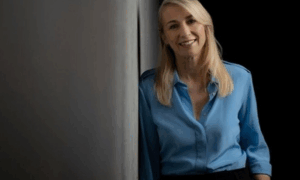
Amanda Laing
Managing Director, Streaming & Broadcast, Nine Entertainment Co.
Amanda Laing is reshaping Nine’s content powerhouse, uniting streaming, television and radio under one umbrella at a time when audience behaviour is fragmenting faster than ever.
Since stepping into the newly created role in 2025, Laing has brought Stan, 9Now, free-to-air television and radio into a single division designed to deliver both commercial efficiency and programming strength.
She has overseen the rollout of Nine’s Integrated Audience Platform, a cross-platform initiative giving advertisers greater precision in targeting and measurement, while extending reach across broadcast and digital.
At the same time, she has driven a $50 million cost-efficiency program for FY25, simplifying operations and reducing duplication across legacy and digital teams.
Content remains central to her brief.
Laing has championed a renewed push into Australian Originals on Stan, securing global partnerships while strengthening local commissioning to help Stan compete in an increasingly crowded streaming market.
She also played a key role in structuring Nine’s broadcast leadership, clarifying accountability across entertainment, news and sport at a pivotal moment when live sport continues to anchor Nine’s growth strategy.
With a portfolio that spans both revenue and content, Laing’s influence in 2025 is significant and she is aligning Nine’s traditional broadcast assets with its digital future, ensuring the business is better positioned to compete across platforms, audiences and advertisers in the years ahead.
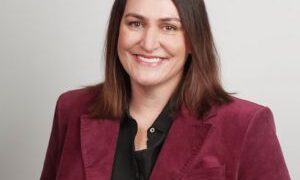
Natalie Harvey
Chief Executive Officer, Mamamia
Natalie Harvey is redefining women’s media by combining cultural relevance, sharp data insight and commercial rigour and turning Mamamia into a must-have brand partner in 2025.
Elevated from Chief Revenue Officer to CEO in mid-2024, Harvey took the reins at a moment of ambition and expectation.
Over the past year, under her leadership Mamamia has leaned into its position as Australia’s leading women’s content platform.
Harvey has overseen revenue surges even in a soft ad market. She has expanded advertiser engagement, prioritised deeper partnerships over transactional deals, and positioned Mamamia not merely as an audience vehicle but as a strategic growth partner. “We’ve been able to really position ourselves as a strategic partner that delivers growth, not just brand,” she shared earlier in the year.
Behind the scenes, Harvey is developing Mamamia’s structural capabilities: she is scaling in-house data infrastructure, growing the podcast and vodcast slate, and accelerating content commerce pilots (notably via a collaboration with shoppable video firm Vudoo).
Harvey’s tenure is already shaping what women-centred media can achieve and balancing trust and purpose with commercial performance.
She is expanding beyond niche into strategic platform status, and showing that culturally grounded media can scale in Australia’s competitive ecosystem.
Under her watch, Mamamia is not just growing, it’s broadening what female-influenced media looks like in 2025.
